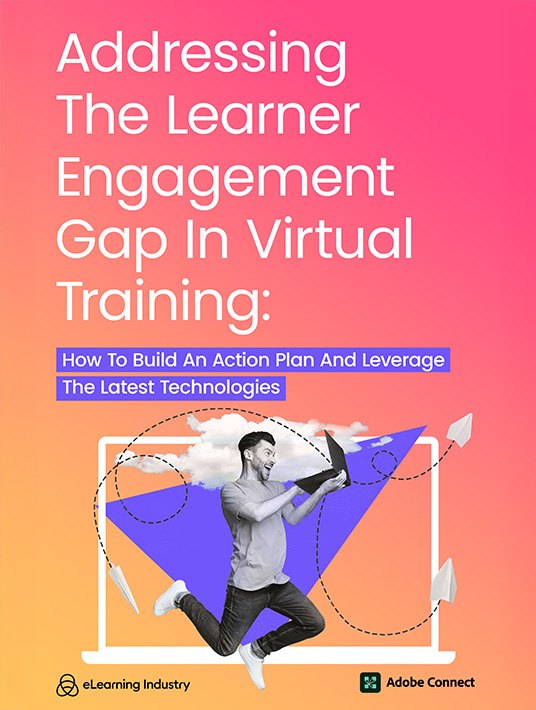Why Learner Engagement Matters More Than Ever
Keeping learners engaged has never been easy. But now things are a little more complicated with hybrid and remote work. Whether your team is fully remote, on-site, or hybrid, ensuring they are actively involved in learning is what makes or breaks your training program. True engagement doesn't only involve completion rates and attendance, though. It means learners connect with the content, retain what they've learned, and apply it. This is why you need an action plan to increase learner engagement as soon as possible.
If you're a Learning and Development (L&D) expert, you know that retaining engagement is a struggle. Even with the best content in the world, people can lose interest if it doesn't feel relevant, interactive, or rewarding. And if we add workplace distractions like emails and meetings or home distractions for remote workers, it's no wonder that even a well-designed course can become uninteresting. Thankfully, this is salvageable. Because chances are, your organization just needs a better strategy. Learner engagement has to be integrated into your learning design and delivery from the beginning. That's exactly what this action plan is here to help you do.

7 Steps To Create An Effective Action Plan For Learner Engagement
1. Set Learning Goals
Before you build any type of learning content, start with the why. What's the purpose of this training? What should learners know when they finish? Effective learning starts with clear goals. They should be targeted, specific, and time-bound so everyone's in the loop and can track their progress. Also, it motivates your learners, and it makes it easier for L&D pros to measure success.
2. Choose Delivery Methods
Now that your goals are clear, it's time to figure out how you'll deliver the content. And this isn't about picking the platform or the tech. It's about meeting your learners' needs. For example, do your employees prefer short videos over slides? Are their roles hands-on, and will they benefit more from simulations than from lectures? Are they busy, needing mobile-friendly formats? Every employee is unique, and you should choose a delivery method that fits into their lives.
3. Make Content Interactive
No matter how important your topic is, if it feels boring or irrelevant, you won't catch your learners' attention. So, how do you keep content engaging? Start by making it interactive. Incorporate things like quizzes, exercises, real-world scenarios, and simulations where learners get to make decisions and see the outcomes. Storytelling is also powerful. Think customer success stories, fun facts about the team, or personal experiences that will make the content relevant and memorable.
4. Encourage Social Learning
Learning becomes more fun and motivating when learners get together and talk to their peers, share ideas, or even exchange jokes. You can build this into your programs by creating opportunities for collaboration. This could include discussion boards, meetings, peer reviews, mentoring programs, or group chats. Plus, encourage learners to ask questions, give feedback, and share their own expertise. Not only does this boost engagement, but it also helps people feel like their opinions matter, which keeps them coming back for more.
5. Track Engagement
Tracking engagement helps you understand what's working and what needs improvement. Are people completing the course? Where are they abandoning it? Are they scoring well on assessments? Therefore, you want to look beyond completion rates. Check participation in discussions, time spent on each module, or feedback from post-lesson surveys. These insights tell you more than attendance. And speaking of feedback, you must do it regularly. This involves giving learners the chance to tell you what they liked and what could be better.
6. Recognize And Reward Effort
Recognition helps learners see the value in what they're doing. It also helps them connect learning with their growth and progress, which makes them enjoy the process more. You can recognize their achievements through digital badges or certificates, leaderboards, shoutouts in meetings or social media posts, and small rewards. Overall, you want to highlight that learning and their efforts are celebrated, and you'll see the positive impact soon.
7. Commit To Improvement
Last but not least, remember that engagement is evolving just like your learners do. After all, business needs change, and so should your engagement strategy. Therefore, make time for regular check-ins on your learning programs. What needs updating? What new tools are out there? Are there gaps between the learning material and what's being used on the job? Also, keep training your L&D team as well.
Essential Checklist For Sparking Learner Interest
This checklist can be a quick reference when you plan, deliver, and review your training program. It's designed to help L&D professionals follow the above action plan for learner engagement and stay on track to create the most exciting experience.
Step 1: Set Learning Goals |
|
Step 2: Choose Delivery Methods |
|
Step 3: Make Content Interactive |
|
Step 4: Encourage Social Learning |
|
Step 5: Track Engagement |
|
Step 6: Recognize And Reward Effort |
|
Step 7: Commit To Improvement |
|
Resources And Tools For Ongoing Learner Engagement
Adobe Captivate
- Perfect for creating responsive eLearning modules. You can add interactive elements, scenarios, and assessments.
- You can design simulations and gamified content that keep learners involved.
- There are options to add audio narration, quizzes, and interactive videos for more lively content.
Adobe Learning Manager
- With this platform, you can manage, deliver, and track your training programs with built-in learner analytics.
- Your learners can get personalized learning paths, badges, and certifications.
- You have the tools to check learner progress and engagement across teams and departments.
Adobe Connect
- You can host Virtual Instructor-Led Training with engagement tools like breakout rooms, real-time polls, and collaborative whiteboards.
- The tool allows you to record sessions for asynchronous learning.
- There's live Q&A, group discussions, and participation tracking.
Adobe Express
- Ideal for designing and sharing infographics, checklists, and microlearning visuals.
- It has a wide range of templates to create content, even if you don't have design experience.
- Your learners can download the visuals or refer to them anytime.
Conclusion
To truly boost learner engagement, you have to find the balance between what learners want to learn and what the business needs them to learn. After all, when training feels relevant, learners are more motivated, and your organization sees real impact. Start by listening to your team, understanding their challenges, and then creating training programs that resonate with all of them. The above action plan has all the details you need to boost learner engagement, and it's a great resource to help you get started.
Download Addressing The Learner Engagement Gap In Virtual Training today to leverage the latest tech, implement tested strategies, and overcome engagement obstacles in your L&D program.
You can also check out Adobe Connect's webinar "Can You Hear Me?" Isn't A Learning Strategy to uncover why traditional video tools don't cut it for training, and what to use instead.







